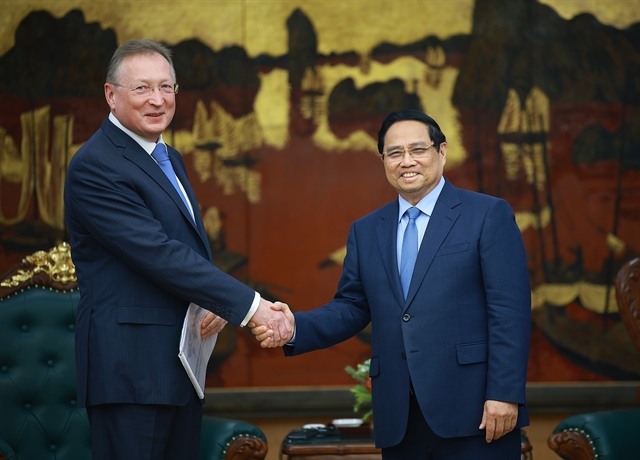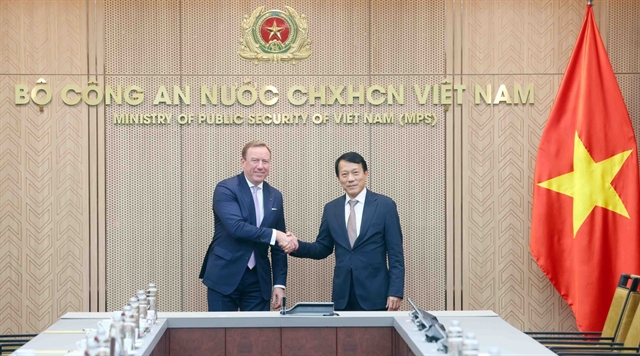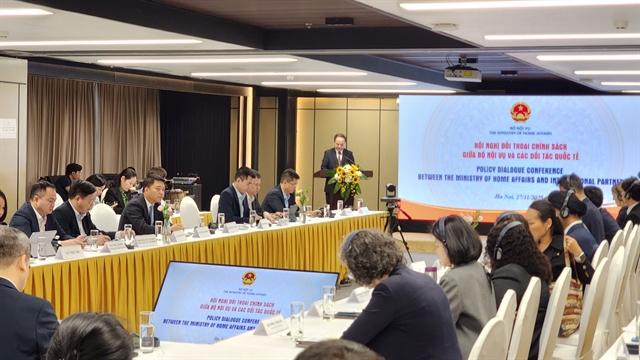 Inner Sanctum
Inner Sanctum
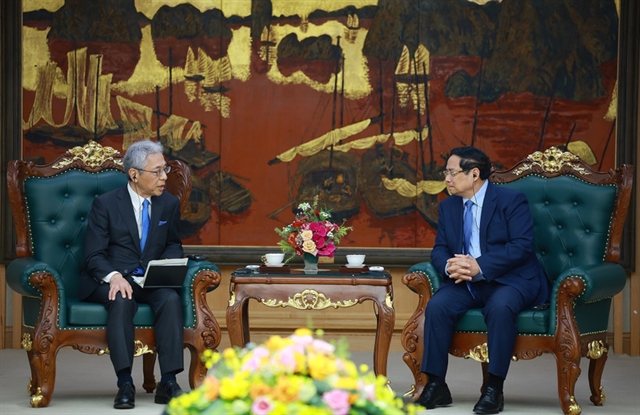
 |
| Murayama Yasufumi has visited Việt Nam around 60 times since 1998. Photo courtesy of Murayama Yasufumi |
From bustling festivals to historic milestones, freelance Japanese photojournalist Murayama Yasufumi has seen Việt Nam through every possible lens. Since first arriving in 1998, he has returned around 60 times, travelling to nearly every province and city to cover the nation’s major events and celebrations.
He shared with Việt Nam News his emotions and vivid memories of journeys that have shaped more than two decades of work in the country.
Inner Sanctum: Can you recall your long course of news coverage in Việt Nam?
I was born on November 3, 1968. I currently live in Kyoto, Japan. I am a freelance photojournalist and not attached to any specific newspaper or magazine. I usually provide articles and photos to media outlets after returning to Japan.
I also regularly hold photo exhibitions and deliver lectures at universities, city halls and other venues, to help audiences better understand about life and development in Việt Nam.
My first visit to Việt Nam was in September 1998 when I joined a tour led by Ishikawa Bunyo, a Japanese photojournalist who covered the Việt Nam War.
Since then, I have visited Việt Nam about 60 times over the past 27 years.
Major events include the 40th and 50th commemorations of the Liberation of the South and National Reunification, the Hoàng Sa (Paracel) Islands, the 50th anniversary of the Mỹ Lai Massacre, the second US–North Korea Summit, the 70th anniversary of the Battle of Điện Biên Phủ, the state funeral of Party Secretary Nguyễn Phú Trọng, and the 80th anniversary of the August Revolution.
Inner Sanctum: Any impressive memories during your journeys in Việt Nam?
What made the biggest impression on me was when my interviewees became emotional as they recounted painful stories from their past. I was also often struck by the beauty of the landscapes while taking photographs.
Now, the number of cities and provinces has been reduced to 34. This means I have visited about 80 per cent of these localities. The provinces I have not yet visited are Lai Châu, Lào Cai, Sơn La, Phú Thọ, Cao Bằng, Lạng Sơn, Quảng Ninh, and Thanh Hoá.
My favourite place in particular is Phú Yên, which was recently incorporated into Đắk Lắk Province. The people are kind and the scenery is beautiful.
There have been countless incidents during my reporting trips. Once, while covering floods, my rental car slid off the roadside and got stuck in the mud, leaving me stranded for most of the morning.
On another occasion, I had planned to photograph the morning market by the coast. I had asked the rental car driver I met the previous day to pick me up at my hotel at 4am, but he did not arrive until around 6am, so I missed the market entirely.
At one point, my entire camera bag was stolen, so I bought a disposable camera locally and continued shooting. Before smartphones had Google Maps, I once asked hotel staff how far my destination was. They said “about 200 metres”, so I started walking — but couldn’t find it. When I asked again at a roadside café, I was told the same thing and ended up walking about 2 kilometres in the scorching sun.
I also once jumped from a high place into a patch of grass and sprained my ankle on a big rock. I went to the hospital straight away and the next day I continued filming while using crutches. Another time when I was about to board a boat with the camera hanging from my neck, the boat suddenly left the dock and I fell into the Mekong River, rendering the camera unusable.
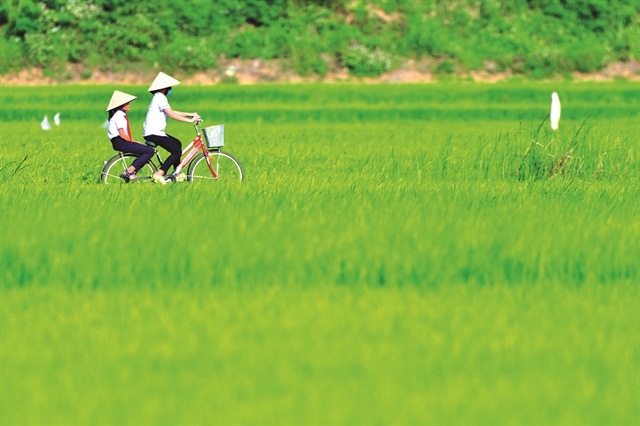 |
| A photo of two girls riding a bicycle through a paddy field in what is now Đắk Lắc Province was taken by Murayama Yasufumi. Photo courtesy of Murayama Yasufumi |
Inner Sanctum: How has Việt Nam changed since your first time?
I feel that Việt Nam has changed a lot since I first visited. One particularly significant change is its economic development. In Japan, I feel that the heart-to-heart connections between people have weakened as the economy has developed, but in Việt Nam, even as the economy has developed, the heart-to-heart connections between people seem to have remained the same as they were in the past. I think this is a major difference between Japan and Việt Nam.
The food is also popular with Japanese people and I love Vietnamese food myself.
What I remember most about Việt Nam is the kindness of the people. Whenever I was in trouble, someone was always ready to help me. For example, when I was injured while reporting, a neighbour brought me ice, compresses, bandages and other items without my asking, and supported me with first aid. I was extremely grateful for that help.
As for the Mỹ Lai Massacre, it occurred before I was born. Since I first began visiting Sơn Mỹ Village in 2008, 40 years after the incident, I have been reporting there regularly.
Inner Sanctum: Do you have any plans for your next trips to Việt Nam?
I have heard that there will not be any major events in Việt Nam for the time being, but I would like to visit all of Việt Nam’s cities and provinces while regularly taking photographs of landscapes and people’s lives.
I believe it is my destiny to continue going to Việt Nam and I recognise that it is special. VNS

